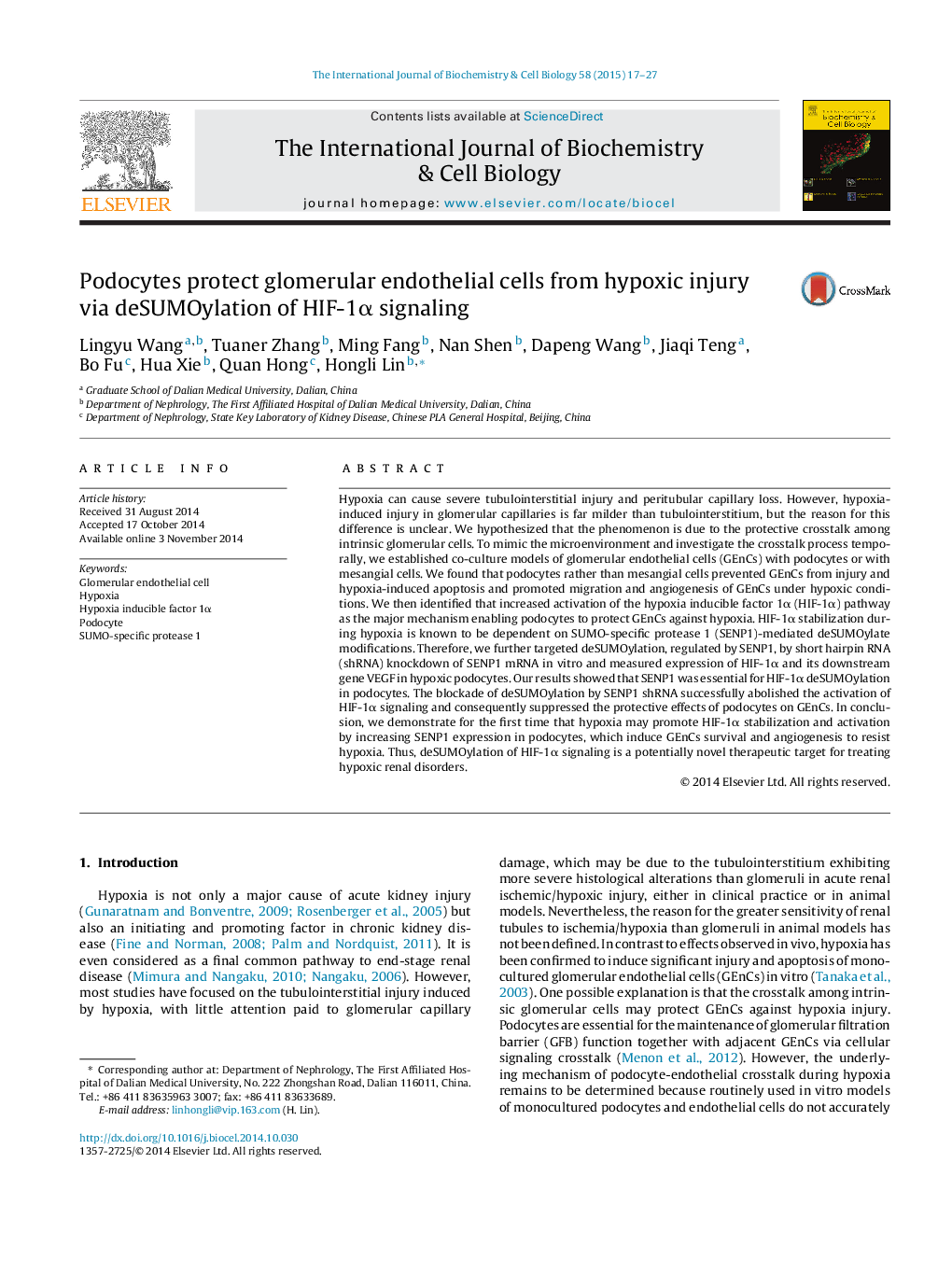| کد مقاله | کد نشریه | سال انتشار | مقاله انگلیسی | نسخه تمام متن |
|---|---|---|---|---|
| 8322850 | 1539886 | 2015 | 11 صفحه PDF | دانلود رایگان |
عنوان انگلیسی مقاله ISI
Podocytes protect glomerular endothelial cells from hypoxic injury via deSUMOylation of HIF-1α signaling
دانلود مقاله + سفارش ترجمه
دانلود مقاله ISI انگلیسی
رایگان برای ایرانیان
کلمات کلیدی
موضوعات مرتبط
علوم زیستی و بیوفناوری
بیوشیمی، ژنتیک و زیست شناسی مولکولی
زیست شیمی
پیش نمایش صفحه اول مقاله

چکیده انگلیسی
Hypoxia can cause severe tubulointerstitial injury and peritubular capillary loss. However, hypoxia-induced injury in glomerular capillaries is far milder than tubulointerstitium, but the reason for this difference is unclear. We hypothesized that the phenomenon is due to the protective crosstalk among intrinsic glomerular cells. To mimic the microenvironment and investigate the crosstalk process temporally, we established co-culture models of glomerular endothelial cells (GEnCs) with podocytes or with mesangial cells. We found that podocytes rather than mesangial cells prevented GEnCs from injury and hypoxia-induced apoptosis and promoted migration and angiogenesis of GEnCs under hypoxic conditions. We then identified that increased activation of the hypoxia inducible factor 1α (HIF-1α) pathway as the major mechanism enabling podocytes to protect GEnCs against hypoxia. HIF-1α stabilization during hypoxia is known to be dependent on SUMO-specific protease 1 (SENP1)-mediated deSUMOylate modifications. Therefore, we further targeted deSUMOylation, regulated by SENP1, by short hairpin RNA (shRNA) knockdown of SENP1 mRNA in vitro and measured expression of HIF-1α and its downstream gene VEGF in hypoxic podocytes. Our results showed that SENP1 was essential for HIF-1α deSUMOylation in podocytes. The blockade of deSUMOylation by SENP1 shRNA successfully abolished the activation of HIF-1α signaling and consequently suppressed the protective effects of podocytes on GEnCs. In conclusion, we demonstrate for the first time that hypoxia may promote HIF-1α stabilization and activation by increasing SENP1 expression in podocytes, which induce GEnCs survival and angiogenesis to resist hypoxia. Thus, deSUMOylation of HIF-1α signaling is a potentially novel therapeutic target for treating hypoxic renal disorders.
ناشر
Database: Elsevier - ScienceDirect (ساینس دایرکت)
Journal: The International Journal of Biochemistry & Cell Biology - Volume 58, January 2015, Pages 17-27
Journal: The International Journal of Biochemistry & Cell Biology - Volume 58, January 2015, Pages 17-27
نویسندگان
Lingyu Wang, Tuaner Zhang, Ming Fang, Nan Shen, Dapeng Wang, Jiaqi Teng, Bo Fu, Hua Xie, Quan Hong, Hongli Lin,